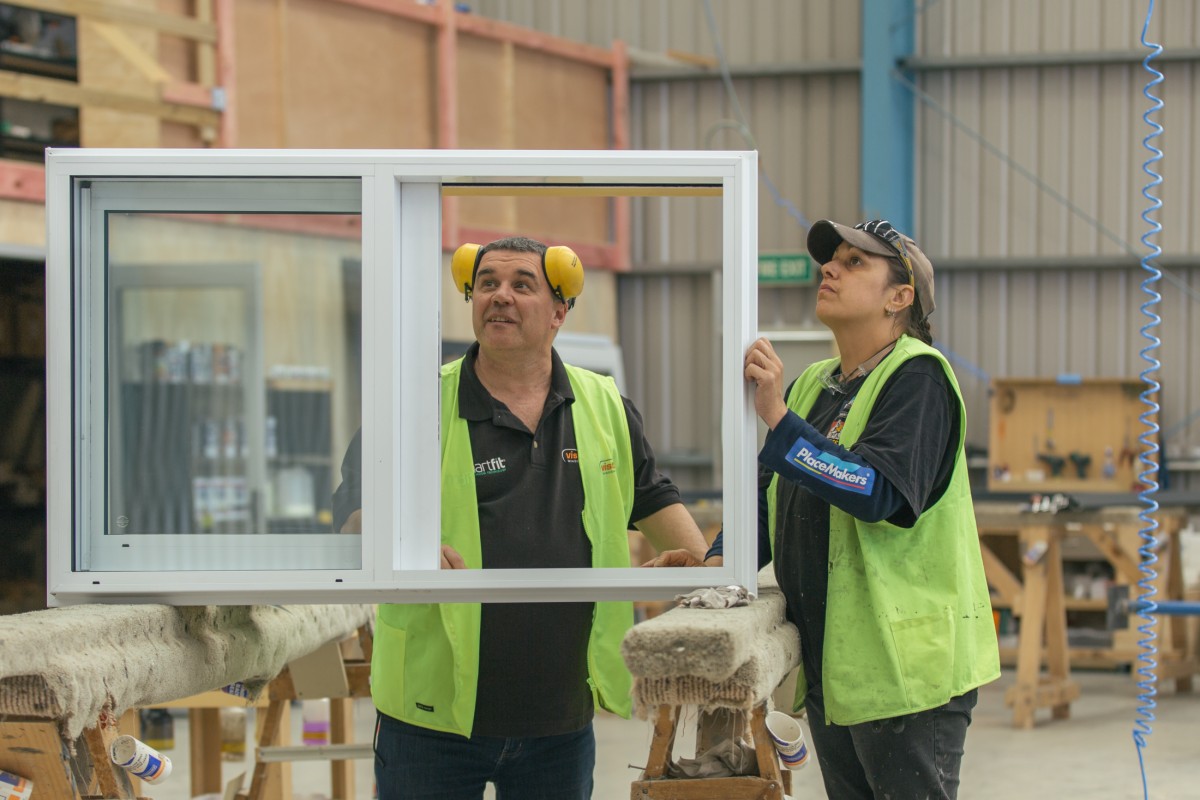SHE’LL BE RIGHT
20 Nov 2018, Uncategorized

BCITO launches campaign to support employers hiring women in the trades
Women make up just 2.6% of workers ‘on the tools’ in New Zealand’s construction sector and the Building Construction Industry Training Organisation (BCITO) says correcting this imbalance is vital to addressing ongoing skills shortages.
Employment forecasts for the construction sector suggest there will be more than 80,000 new and replacement job openings in the next five years. Traditional workforce pools are not meeting industry demands for skilled workers and record low birthrates in 2003 is making competition among businesses for school leavers particularly fierce.
“The sector is crying out for skilled workers and boosting gender diversity is vital. Currently, less than 5% of BCITO employers take on female apprentices. We need more employers to broaden their scope and wake up to the benefits of a more diverse workforce,” says Warwick Quinn, BCITO CEO.
“We also need more women to consider a career in the trades. We are concerned that not enough schools are encouraging young women to get involved. Although 96% of our female apprentices have strong job satisfaction, nearly three-quarters of them never had the chance to participate in construction-related courses while at school,” says Quinn.
Behind the scenes
To help address this gender imbalance, BCITO has released a short film which explores and challenges stereotypes. The My Boss: Legend video reveals what it’s really like for employers, female apprentices, and those who have supported their decision to enter this male-dominated industry. The campaign aims to encourage more employers to open the door to hiring women.
MB Brown Builders in Wairarapa employs Paris Ternent-James, 22, as a carpentry apprentice. Owner Stephen Brown runs his business by the core values of family, respect, equal opportunities and providing a positive and engaging learning environment.
“I have a daughter and sons and I believe they should have the same chance in life,” says Stephen, who took part in the BCITO documentary with his wife Judy.
“I think you’ve always got to look at your company and employ the best person for the job at the time,” says Judy.
Great Lakes Aluminium in Taupo employs apprentice Tamara Tuhiwai, who began her trade career in her early 40s. Her boss, Bronek Szpetnar, runs his business on the values of equality and whanau. He is simply interested in employing the best person for the job. Half of his staff are women.
“Tamara does exactly the same job that the guys do,” says Bronek.
It’s a job that she really enjoys.
“To be given the opportunity to be able to work in a trade is an awesome feeling and I think other women should be given the chance to show what they can do,” says Tamara.
Tools needed for the job
For those employers looking for more concrete resources, BCITO has collated a series of tools and resources at BCITO.org.nz/buildingwomen designed to help support and inform businesses on how they can successfully adopt a broader and more diverse workforce.
These include:
- A recruitment toolkit with good recruitment practices and processes, as well as templates for common recruitment forms, letters and position descriptions.
- A website that will tell you whether your job advertisement uses gender-biased language.
- The Human Rights Commission’s A-Z Guide for pre-employment.
- A dedicated job-matching service.
- A comprehensive guide to flexible working arrangements and parental leave.
“While some might think it laughable that in this day and age we are providing guidance on how to hire women, just look at the numbers,” says Warwick Quinn. “Less than 3% of construction tradespeople are women. That basically means more than 90% of the workforce has never worked with or employed a woman.”
From the boss’ mouth
“I’m starting to see a lot more women in plumbing and electrical,” says Adrian Mooney, director of Pronto Build in Hawke’s Bay.
“A few years back I might have thought building sites had too much heavy lifting and would be too rough but the one women apprentice I’ve had took it all in her stride – she was the best apprentice I ever had.
Adrian says there’s a valuable talent pool among women that should be tapped into. To remove any stigma that might exist, he recommends putting an extra focus on team building and establishing a culture where all team members are respected.
Mark Haimes of Haimes Building says he “sees no good reason why women who enjoy physical activity and working with their hands shouldn’t take up carpentry”.
“Employers need to remember that every apprentice adds something to the team. Look for the positives when someone approaches you for an apprenticeship. There are so few women, you can be sure she will be keen and focused.”
Martin Gould of Martin Gould Builders has certainly found this to be the case – he encouraged now fourth-year apprentice Rachel Corbett to start her apprenticeship.
“She’d been landscaping for about ten years and my guys were working on a paving job next to her,” says Martin. “She started chatting to me about building, as she’d always enjoyed the timber side of landscaping, and I encouraged her to give it a go.
“She’s been working with us now for four years. She’s an excellent carpenter and I’m really glad to have her on board.”
Changing perceptions
Carpentry apprentice Rachel Corbett says it’s as much about educating employers as it is educating women themselves.
“A lot of my girlfriends have said they wish they could be a carpenter like me, but they don’t feel that it’s attainable because of the physicality of the work.
“It’s also just not a career they ever would have thought about normally – they’ve only considered it because they know me.
“I think there’s a widely held belief that builders are, and should be, men. I think it might help if building wasn’t presented as such a guy’s industry – you don’t see many female builders in movies, on advertisements, or interviewed in the media, so it’s like we don’t exist unless it’s for something ‘women-specific’.”
She says this belief starts young and isn’t challenged as you age.
“To change this, teachers and counsellors in schools would need to start promoting it as a career option for girls at an earlier age. It certainly wasn’t seen as career choice when I was younger.”
BCITO’s goal is to influence all those who can have an impact – parents, schools, the construction workforce, potential female career seekers, employers and New Zealanders as a whole.
“It is our goal that women will make up 30% of people in construction trade roles by 2040, creating a workforce that is diverse and inclusive, where women have equal opportunities for success at all levels,” says Quinn.
“Diversity is good business – it is a strength and an opportunity for the entire industry.”
Register to earn LBP Points Sign in



